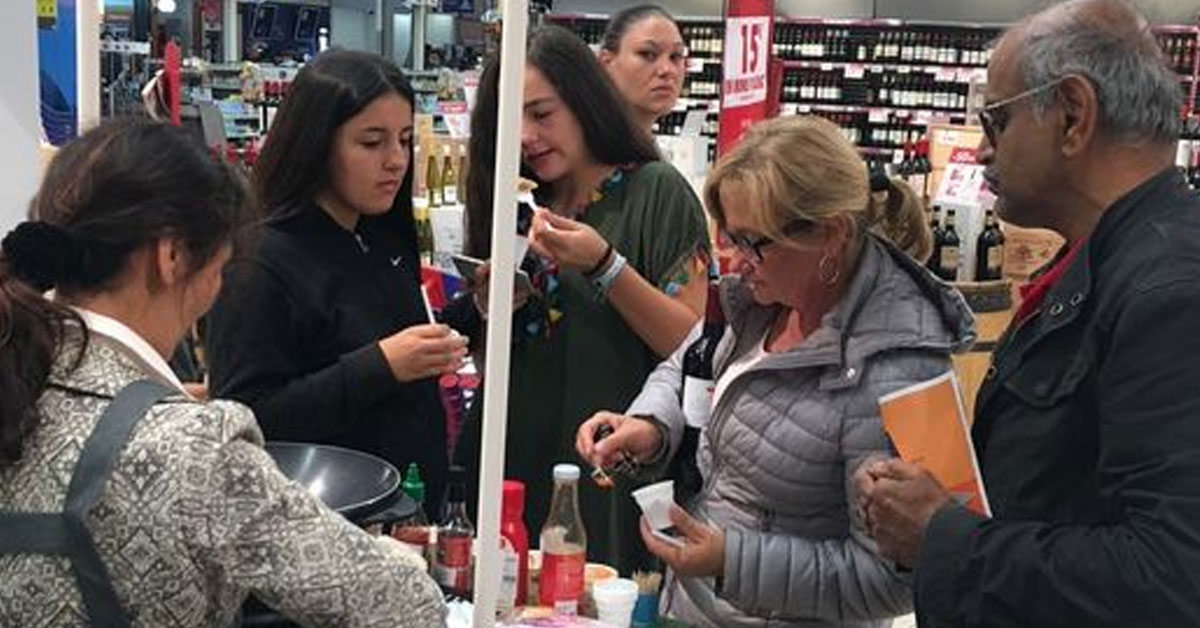!['Bibigo dumplings' sold in Costco, USA. Instead of dumpling, which is a common English expression, it was written as mandu, a Korean pronunciation. [사진 CJ제일제당]](https://i0.wp.com/pds.joins.com/news/component/htmlphoto_mmdata/202103/03/423d8003-e40d-4605-ab46-796441f5c78d.jpg?w=560&ssl=1)
‘Bibigo dumplings’ sold in Costco, USA. Instead of dumpling, which is a common English expression, it was written as mandu, a Korean pronunciation. [사진 CJ제일제당]
Korean dumplings are captivating the taste of the world. It is enjoying popularity in the US, the largest export market, overtaking Chinese products. According to the Institute for International Trade and Trade of the Korea International Trade Association on the 3rd, due to the new coronavirus infection (Corona 19), demand for home convenience meals (HMR) surged overseas. It reached an all-time high.
In particular, the U.S. is the largest export market for frozen dumplings made in Korea, with sales of $11.74 million (approximately 13 billion won), up 50% from the previous year. Instead of dumpling, a common English expression, more and more people know mandu, a Korean expression. Accordingly, the share of Korean products in the US frozen dumpling import market increased to 2.7% last year. It surpassed the Chinese-made (6th) and rose to 4th place.

Global export trend of Korean frozen dumplings. Graphic = Younghee Kim [email protected]
The leader in Korean dumplings is CJ CheilJedang, with the brand’Bibigo’. CJ advertised the brand as’Bibigo Mini Wonton’, a form of dumplings familiar to locals, through Costco, an American hypermarket, and marked it as mandu. Unlike Chinese dumplings, which are mainly pork, products containing various fillings such as beef and chicken gained popularity. Thanks to this, it is recognized as a well-being meal, not just a snack. An official at CJ CheilJedang introduced, “Recently, influencers such as American chefs and YouTubers do not call it’Korean dumplings’, but pronounce it as’mandu’ in Korean.”
Globalization of dumplings through local production and R&D
CJ has established a R&D organization as well as a production facility in order to quickly reflect and produce the tastes of US consumers. Thanks to the establishment of a local production system, the domestic and overseas sales of Bibigo dumplings surpassed 1 trillion won for the first time as a single food brand in Korea last year. Shinsegae Food was also aggressively targeting the market by expanding its US factory last year.
Korean dumplings are popular not only in the United States but also on the world stage. Japan is the second largest exporter of frozen dumplings in Korea, with exports of $8.95 million (approximately 10 billion won), up 65% from the previous year. In the Japanese dumpling market, the Korean-made market share was only 4.5% in 2016, but it has nearly quadrupled to 17.3% last year. The share of Chinese dumplings, which occupied half of the same period, fell to 36%, narrowing the share gap.
![There is a bibigo dumpling tasting event at a large supermarket in France. [사진 CJ제일제당]](https://i0.wp.com/pds.joins.com/news/component/htmlphoto_mmdata/202103/03/60b7b704-0e0a-407a-91c0-23205bea8459.jpg?w=560&ssl=1)
There is a bibigo dumpling tasting event at a large supermarket in France. [사진 CJ제일제당]
In Europe, it is popular mainly in the UK, France, and Germany, where Asian food culture has spread a lot. It is sold hotly in over 800 large retail channels across Europe and all 34 Costco stores. Last year, exports of frozen dumplings increased a lot, especially in Southeast Asian countries such as the Philippines (export growth rate of 84%) and Vietnam and Singapore, playing a leading role in K-food.
Shim Hye-jeong, a senior researcher at the Institute for International Trade and Trade, said, “Korean-style dumplings are popular all over the world because they have thin blood and can be cooked in a variety of ways such as steam, soup, and deep-fried food. It is recognized as a well-being food with a lot of fruits and vegetables.”
☞Dumpling=It refers to a food that is made out of dough and mixed with meat and vegetables, and then steamed or fried. Each has its own food culture, such as mantou and dim sum in China, gyoza in Japan, ravioli in Italy, and empanada in Latin America.
Reporter Kang Byung-cheol [email protected]
![]()
